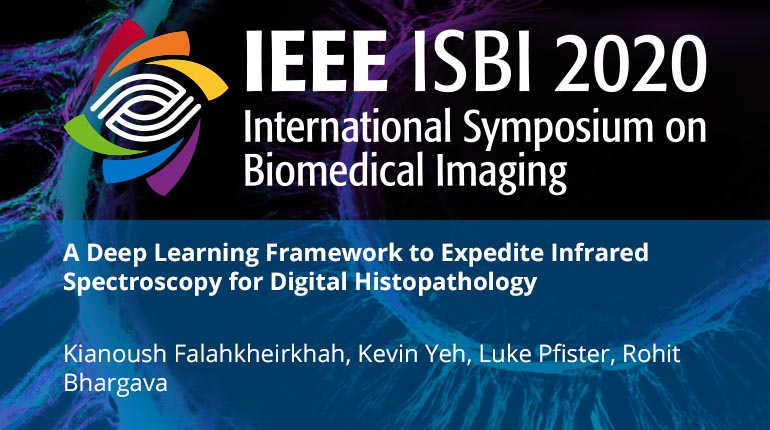
Already purchased this program?
Login to View
This video program is a part of the Premium package:
A Deep Learning Framework to Expedite Infrared Spectroscopy for Digital Histopathology
- IEEE MemberUS $11.00
- Society MemberUS $0.00
- IEEE Student MemberUS $11.00
- Non-IEEE MemberUS $15.00
A Deep Learning Framework to Expedite Infrared Spectroscopy for Digital Histopathology
Histopathology, based on examining the morphology of epithelial cells, is the gold standard in clinical diagnosis and research for detecting carcinomas. This is a time-consuming, error-prone, and non-quantitative process. An alternate approach, Fourier transform infrared (FTIR) spectroscopic imaging offers label-free visualization of the tissues by providing spatially-localized chemical information coupled to computational algorithms to reveal contrast between different cell types and diseases, thereby skipping the manual and laborious process of traditional histopathology. While FTIR imaging provides reliable analytical information over a wide spectral profile, data acquisition time is a major challenge in the translation to clinical research. In the acquisition of spectroscopic imaging data, there is an ever-present trade-off between the amount of data recorded and the acquisition time. Since not all the spectral elements are needed for classification, discrete frequency infrared (DFIR) imaging has been introduced to expedite the data recording by measuring required spectral elements. We report a deep learning-based framework to further accelerate the whole process of data acquisition and analysis through also subsampling in the spatial domain. First, we introduce a convolutional neural network (CNN) to leverage both spatial and spectral information for segmenting infrared data, which we term the IRSEG network. We show that this framework increases the accuracy while utilizing approximately half the number of unique bands commonly required for previous pixel-wise classification algorithms used in the DFIR community. Finally, we present a data reconstruction approach using generative adversarial network (GAN) to reconstruct the whole spatial and spectral domain while only using a small fraction of the total possible data, with minimal information loss. We name this IR GAN-based data reconstruction IRGAN. Together, this study paves the way the translation of IR imaging to clinic for label-free histological analysis by boosting the process approximately 20 times faster from hours to minutes.
Histopathology, based on examining the morphology of epithelial cells, is the gold standard in clinical diagnosis and research for detecting carcinomas. This is a time-consuming, error-prone, and non-quantitative process. An alternate approach, Fourier transform infrared (FTIR) spectroscopic imaging offers label-free visualization of the tissues by providing spatially-localized chemical information coupled to computational algorithms to reveal contrast between different cell types and diseases, thereby skipping the manual and laborious process of traditional histopathology. While FTIR imaging provides reliable analytical information over a wide spectral profile, data acquisition time is a major challenge in the translation to clinical research. In the acquisition of spectroscopic imaging data, there is an ever-present trade-off between the amount of data recorded and the acquisition time. Since not all the spectral elements are needed for classification, discrete frequency infrared (DFIR) imaging has been introduced to expedite the data recording by measuring required spectral elements. We report a deep learning-based framework to further accelerate the whole process of data acquisition and analysis through also subsampling in the spatial domain. First, we introduce a convolutional neural network (CNN) to leverage both spatial and spectral information for segmenting infrared data, which we term the IRSEG network. We show that this framework increases the accuracy while utilizing approximately half the number of unique bands commonly required for previous pixel-wise classification algorithms used in the DFIR community. Finally, we present a data reconstruction approach using generative adversarial network (GAN) to reconstruct the whole spatial and spectral domain while only using a small fraction of the total possible data, with minimal information loss. We name this IR GAN-based data reconstruction IRGAN. Together, this study paves the way the translation of IR imaging to clinic for label-free histological analysis by boosting the process approximately 20 times faster from hours to minutes.
 Cart
Cart Create Account
Create Account Sign In
Sign In





